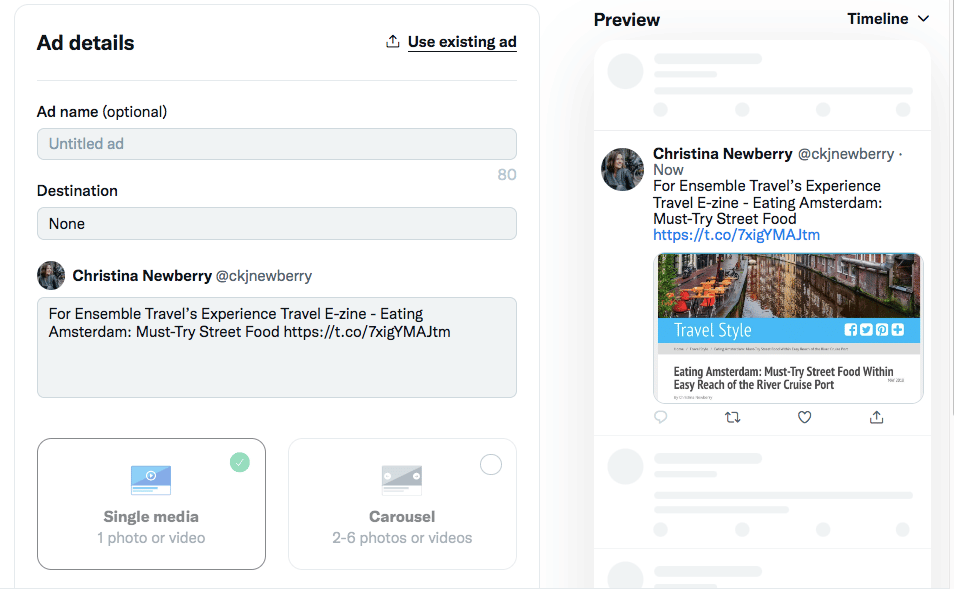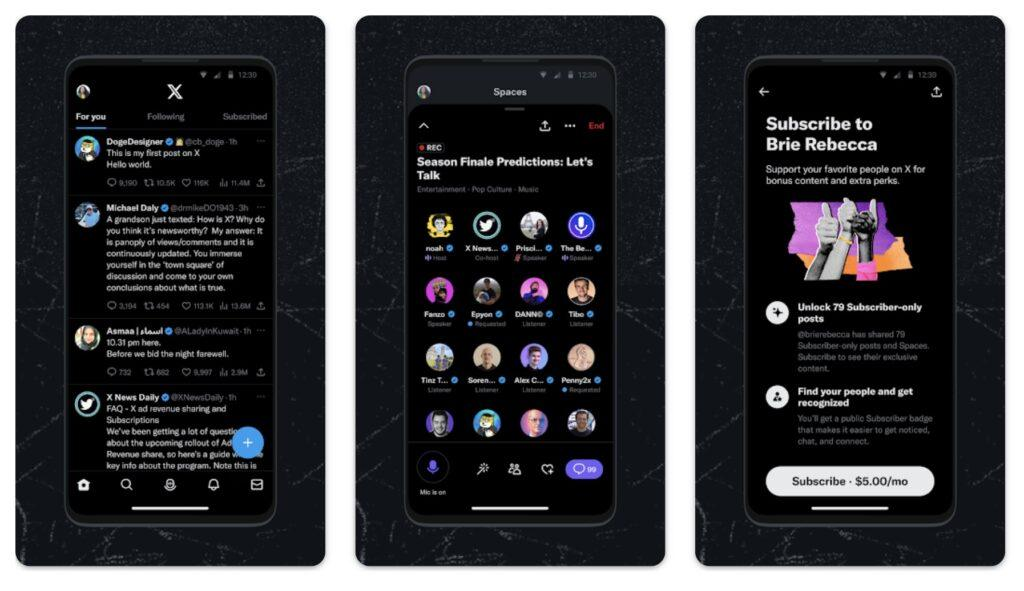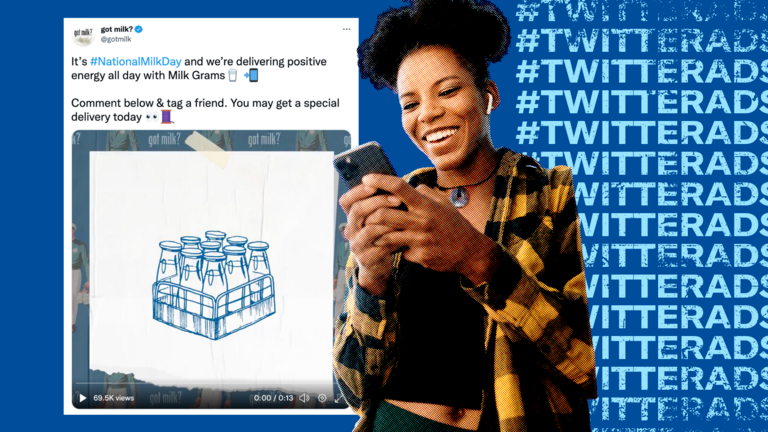Social media platforms have become essential marketing tools for businesses of all sizes. One platform that stands out for its advertising capabilities is Twitter. With over 330 million active users worldwide, Twitter provides businesses with a unique opportunity to reach their target audience and drive business growth.
In this article, we will explore the basics of Twitter advertising, how to set up an advertising account, develop an advertising strategy, and provide tips and best practices to overcome common challenges. Let’s dive in!
Understanding the Basics of Twitter Advertising

Before we delve into the intricacies of Twitter advertising, let’s start with the basics. So, what exactly is a Twitter campaign or advertising? Simply put, Twitter advertising is a paid advertising medium that allows businesses to promote their products, services, or brand on the Twitter platform. With Twitter ads, businesses can target specific audiences, amplify their reach, increase brand awareness, and drive website traffic or conversions.
Twitter advertising encompasses various ad formats, including promoted tweets, promoted accounts, twitter ads manager and promoted trends. These ad formats appear within users’ Twitter feeds, timelines, and search results, allowing businesses to engage with their target audience seamlessly.
But why is Twitter advertising important for businesses? Let’s explore a few reasons:
Reach a Global Audience for your Target Audience
With millions of active users worldwide, Twitter provides businesses with the opportunity to reach a vast global audience. Whether you’re a small local business looking to expand or a multinational corporation aiming to increase market share, Twitter advertising can help you connect with potential customers from all corners of the globe.
Precise Targeting
One of the key advantages of Twitter advertising is its advanced targeting options. Businesses can reach their ideal customers based on demographics, interests, behaviors, and even specific keywords. This level of precision ensures that your ads are shown to the right people at the right time, maximizing the chances of engagement and conversion.
Cost-Effective Advertising
Twitter advertising allows businesses of all sizes to set their own budgets and only pay for desired outcomes, such as clicks, engagements, or app installs. This flexibility makes it a cost-effective advertising solution, especially for small and medium-sized enterprises with limited marketing budgets. You can allocate your resources strategically and measure the return on investment accurately.
Engagement and Interaction
Twitter’s real-time nature makes it an ideal platform for businesses to interact and engage with their audience. Whether it’s responding to customer queries, sharing valuable content, or running interactive campaigns, Twitter offers a unique opportunity to foster brand loyalty and drive customer satisfaction. By actively participating in conversations and building relationships, businesses can establish themselves as industry leaders and gain a competitive edge.
Twitter advertising is a powerful tool that businesses can leverage to expand their reach, target specific audiences, and drive meaningful engagement. By understanding the basics and harnessing the platform’s unique features, businesses can unlock a world of opportunities and propel their growth in the digital landscape.
Setting Up Your Twitter Advertising Account

Now that we have covered the basics, let’s explore how to set up your first Twitter ads and advertising account. The process is straightforward, and we will guide you through the necessary steps below:
Steps to Create a Twitter Advertising Account
To create a Twitter advertising account, follow these steps:
- Visit ads.twitter.com and sign in with your existing Twitter account or create a new one if you don’t have an account already.
- Click on the “Get Started” button to begin the account creation process.
- Provide your business information, including the business name, website, and time zone.
- Set your advertising preferences, such as your budget, target audience, and ad objectives.
- Complete your account setup by verifying your email address and payment information.
Navigating the Twitter Advertising Dashboard
Once you have set up your Twitter advertising account, you will be directed to the Twitter Advertising Dashboard. The dashboard provides a comprehensive overview of your advertising campaigns, ad performance metrics, and audience insights.
Within the Twitter Advertising Dashboard, you will find various sections that allow you to monitor and manage your advertising campaigns effectively. Let’s take a closer look at some of the key features:
Twitter Ad Campaign Overview
The campaign overview section provides a snapshot of your active campaigns, including the number of impressions, engagements, and the total amount spent. It gives you a quick glance at how your campaigns are performing at a high level.
Ad Performance Metrics
In the ad performance metrics section, you can dive deeper into the performance of your individual ads. You can view metrics such as impressions, clicks, click-through rate (CTR), and engagement rate. These metrics help you evaluate the effectiveness of your ads and make data-driven decisions to optimize your campaigns.
Audience Insights
Understanding your target audience is crucial for successful advertising. The audience insights section provides valuable information about the demographics, interests, and behaviors of the people engaging with your ads. This data enables you to refine your audience targeting, and create more relevant and effective campaigns.
Conversion Tracking
Conversion tracking allows you to measure the impact of your Twitter ads on your business goals. By setting up conversion tracking, you can track actions such as website visits, app installs, or purchases that occur as a result of your advertising efforts. This information helps you assess the return on investment (ROI) of your campaigns and optimize them for better results.
Overall, the Twitter Advertising Dashboard empowers you with the tools and insights needed to create and manage successful advertising campaigns on the platform. With its user-friendly interface and comprehensive features, you can stay in control of your advertising efforts and drive meaningful results for your business.
Developing a Twitter Advertising Strategy

Before diving into creating your first Twitter ad campaign, it is crucial to develop a solid advertising strategy. A well-defined strategy will help you achieve your business goals effectively. Here are some key steps to consider:
When it comes to Twitter advertising, there are several factors to consider in order to maximize your campaign’s success. One of the first steps is defining your business goals. Take the time to clearly outline what you hope to achieve through your next Twitter ads campaign. Are you looking to increase brand awareness, drive website traffic, generate leads, or boost sales? By defining your goals, you can tailor your ad campaigns to align with your desired outcomes.
Once you have defined your goals, the next step is identifying your target users based on audience on Twitter. Understanding your audience is fundamental to the success of your ad campaigns. By identifying their interests, demographics, and online behavior, you can create highly targeted campaigns that resonate with your audience. Conducting thorough market research, analyzing customer data, and utilizing Twitter analytics are all valuable methods to gain insights into your audience.
Market research plays a crucial role in identifying your target audience. By conducting surveys, focus groups, and analyzing industry trends, you can gain a deeper understanding of who your potential customers are and what they are looking for. This information will help you create ads that speak directly to their needs and interests.
Customer data is another valuable resource when it comes to identifying your target audience. Analyzing data from your existing customer base can provide insights into their demographics, preferences, and purchasing behavior. This information can be used to create customer profiles or buyer personas, which will help you target your ads more effectively.
In addition to market research and customer data, utilizing Twitter analytics is essential for understanding your audience. Twitter provides a wealth of data and insights about your followers, including their demographics, interests, and engagement levels. By analyzing this data, you can identify patterns and trends that will inform your ad targeting and content strategy.
Once you have a clear understanding of your target audience, you can begin crafting your ad campaigns. Consider the messaging, visuals, and call-to-action that will resonate with your audience. Tailor your ads to address their pain points, highlight the benefits of your product or service, and provide a clear next step for them to take.
Remember, developing a Twitter advertising strategy is an ongoing process. Continuously monitor the performance of your ads, make adjustments as needed, and stay up-to-date with the latest trends and best practices in Twitter advertising. By doing so, you can optimize your campaigns and achieve your business goals effectively.
Types of Twitter Ads and How to Use Them

Now that you have a solid strategy in place, let’s explore the different types of Twitter ads at your disposal and how to use them to maximize your advertising efforts.
Promoted Tweets
Promoted tweets are regular tweets that businesses pay to promote to a wider audience. These tweets appear within users’ timelines, search results, and relevant conversations, allowing businesses to amplify their reach and engagement. When creating promoted tweets, ensure they are engaging, relevant, and tailored to your target audience.
For example, if you are a clothing brand, you can use promoted tweets to showcase your latest collection or announce a limited-time sale. By using promoted ads and targeting users who have shown an interest in fashion or similar brands, you can increase the chances of driving traffic to your website or getting more people to engage with your content.
Another way to use promoted tweets is to share valuable content such as blog posts or industry insights with custom audience. By providing useful information to your target audience, you can position your brand as an authority in your niche and build trust with potential customers.
Promoted Accounts
Promoted accounts are paid ads aimed at increasing your follower count and expanding your brand’s reach. These ads appear in users’ timelines, search results, and the “Who to follow” section. Twitter’s targeting options enable you to reach users who are likely to be interested in your business and encourage them to follow your account.
When using promoted accounts, it’s important to have a clear understanding of your target audience. By using demographic targeting and identifying the demographics, interests, and behaviors of your ideal followers, you can create targeted campaigns that resonate with them.
For instance, if you are a fitness influencer, you can use promoted accounts to reach users who are interested in health and wellness. By showcasing your expertise and sharing inspiring content, you can attract followers who are genuinely interested in your fitness journey and are more likely to engage with your posts.
Promoted Trends
Promoted trends allow businesses to showcase their brand and boost visibility by placing their hashtag at the top of the trending topics list. Promoted trends appear to users who click on the promoted hashtag, enabling businesses to drive engagement, extend campaign reach, and spark conversations.
When using promoted trends, it’s crucial to choose a hashtag that aligns with your brand and resonates with your target audience. The hashtag should be relevant, catchy, and easy for target users to remember.
For example, if you are a travel agency promoting a new vacation package, you can have twitter users create a hashtag like #DreamGetaway. By promoting this hashtag as a trend, you can encourage users to share their dream destinations or engage in conversations about their travel experiences. This not only increases brand visibility but also creates a sense of community among your audience.
Remember, the key to successful Twitter advertising is to understand your audience, create compelling content, and leverage the platform’s targeting options. By using custom audiences and utilizing promoted tweets, promoted accounts, and promoted trends effectively, you can reach a wider audience, increase engagement, and drive meaningful results for your business.
Crafting Effective Twitter Ad Campaigns

Creating compelling and engaging Twitter ad campaigns is crucial to grabbing your audience’s attention and driving desired actions. In today’s digital landscape, where users are constantly bombarded with information, and with twitter advertising efforts it is essential to stand out from the crowd and make a lasting impression. Here are some tips to help you craft effective campaigns:
Writing Engaging Ad Copy
The text accompanying your ad (ad copy) should be concise, compelling, and tailored to your target audience. It is important to understand the demographics, interests, and preferences of your audience to create copy that resonates with them.
Grab attention with a captivating headline that sparks curiosity and entices users to learn more. Convey your message clearly and succinctly, using language that is easy to understand and relatable to your audience.
Additionally, including a strong call-to-action will prompt users to take the desired action, whether it’s making a purchase, signing up for a newsletter, or visiting your website. Experiment with different ad copy variations to see what performs best and continuously refine your approach based on the feedback and data you receive.
Furthermore, it is crucial to keep in mind the character limit on Twitter. With only 280 characters available, every word counts. Craft your ad copy thoughtfully, ensuring that each word contributes to the overall message and impact of your campaign. Consider using concise and impactful language, incorporating keywords that are relevant to your brand and campaign objectives.
Choosing the Right Visuals
Visuals play a significant role in attracting users’ attention on Twitter. As a highly visual platform, Twitter provides an opportunity to captivate your audience through eye-catching images, videos, or GIFs. When selecting visuals for your ad campaign, it is essential to choose high-quality media that is not only visually appealing but also relevant to your message and aligns with your brand’s visual identity.
Consider the emotions you want to evoke in your audience and select visuals that convey those emotions effectively. Whether it’s a stunning photograph, an engaging video, or a captivating GIF, the visual element of your ad should complement and enhance the overall message you are trying to convey.
Additionally, ensure that the visuals you choose are optimized for Twitter’s platform, taking into account the recommended dimensions and file sizes to ensure optimal display quality.
Remember, a visually appealing ad can make the difference between a user scrolling past or stopping to engage with your ad. With the vast amount of content competing for attention on Twitter, it is crucial to make your visuals stand out and capture the viewer’s interest within seconds.
Measuring the Success of Your Twitter Ads

Once your Twitter ad campaigns are live, it’s crucial to measure their success to optimize future campaigns. Twitter Analytics provides valuable insights into your ad performance, audience engagement, and campaign effectiveness. Key performance indicators (KPIs) to consider include:
Understanding Twitter Analytics
Twitter Analytics offers valuable data on tweet impressions, engagement rate, link clicks, and follower growth. By analyzing these metrics, you can identify which ads are performing well and make data-driven decisions to refine your campaigns.
Key Performance Indicators for Twitter Ads
The success of your Twitter ad campaigns can be measured using various KPIs, such as click-through rate (CTR), cost per click (CPC), conversion rate, and return on ad spend (ROAS). Regularly monitor these metrics to gauge the effectiveness of your campaigns and make adjustments as needed.
Tips and Best Practices for Twitter Advertising

Now that you have a solid understanding of Twitter advertising, let’s explore some additional tips and best practices to enhance your advertising efforts:
Optimizing Your Twitter Ad Budget
Start with a conservative budget and gradually increase it as you gain insights into the performance of your campaigns. Regularly monitor your ad spend and adjust budgets based on the ads that drive the best results. Experiment with different bidding strategies, targeting options, and ad formats to find what works best for your business.
Leveraging Twitter Ad Tools and Features
Twitter offers a range of ad tools and features to help businesses optimize their campaigns. Explore features such as tailored audiences, website tags, and conversion tracking to maximize the effectiveness of your ads. Stay up to date with new features and updates by regularly visiting the Twitter Advertising blog.
Overcoming Common Challenges in Twitter Advertising

While Twitter advertising offers immense opportunities, there are common challenges that businesses may encounter along the way. Let’s explore some of these challenges and how to overcome them:
Dealing with Negative Feedback
As with any form of advertising, negative feedback from customers or followers is possible. In such cases, it is important to respond promptly, address concerns, and strive for resolution. Use negative feedback as an opportunity to improve your products or services and build stronger relationships with your audience.
Staying Updated with Twitter’s Advertising Policies
Twitter’s advertising policies are subject to change, so it is vital to stay informed and compliant. Regularly review Twitter’s advertising policies and guidelines to ensure your campaigns adhere to the platform’s rules. Failure to comply may result in your ads being rejected or your account being suspended.
With its vast user base and advertising capabilities, Twitter is a powerful platform for businesses to fuel their growth. By understanding the basics of Twitter advertising, setting up an advertising account, developing a robust advertising strategy, and implementing best practices, businesses can leverage the platform to reach their target audience, increase brand awareness, and drive tangible results. Get started with Twitter advertising today and unlock the full potential of this dynamic social media platform.






